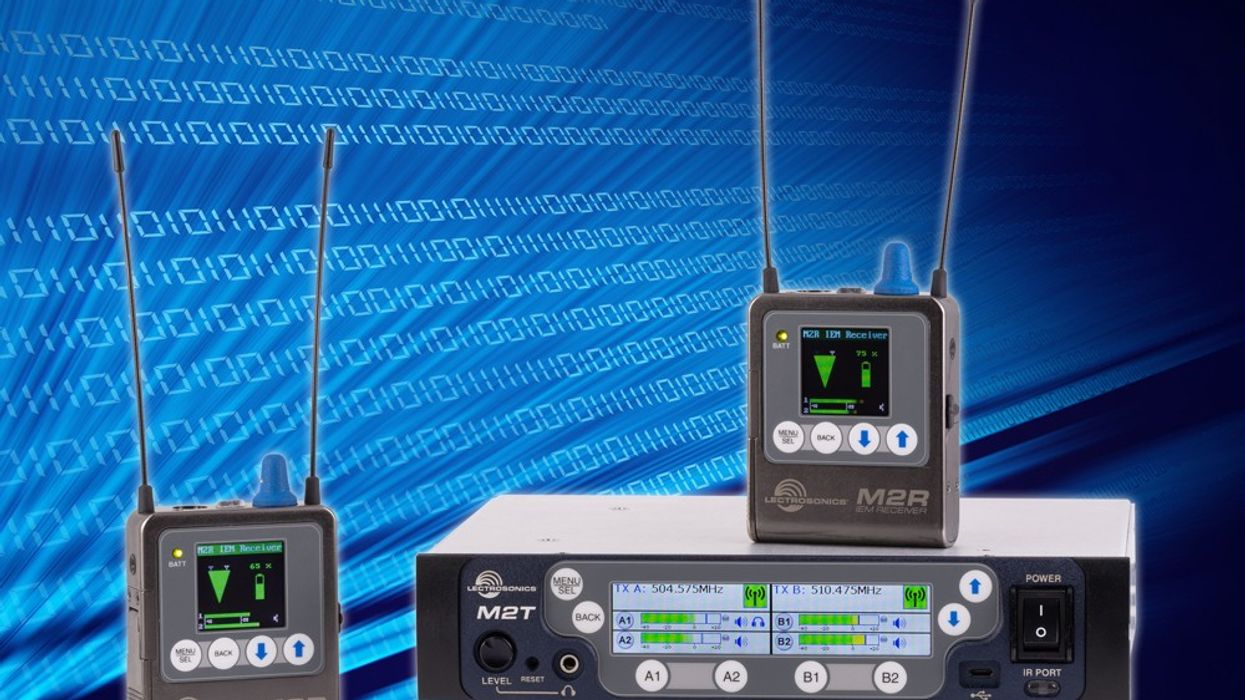This New Wireless Monitoring System Makes Boom Operating Easy
Audio specialist Lectrosonics introduces a new digital wireless monitoring system, the Duet, for filmmakers requiring high-definition audio.

Ahead of this year's NAB, Lectrosonics has rolled out some professional tech for aural enthusiasts in filmmaking, touring, broadcast and theater looking to step up their game.
The new Lectrosonics Duet comes with the M2T dual-stereo half-rack transmitter and the M2R belt pack receiver and covers UHF frequencies 470-608 MHz in a single range. More notably, the Duet uses digital modulation for its transmission to provide a clean sound and can accept analog or Dante digital inputs. (If you're unfamiliar with Dante, it's a protocol for communicating multiple audio channels over standard Ethernet and IP networks.)
The M2R bodypack receiver touts advanced antenna diversity switching during digital packet headers for seamless audio. This means that when you run into frequency interference, it will jump to a clean signal. Other cookies on the M2R include a 24-bit digital audio stream, wide dynamic range, a low noise floor, and rock-solid stereo image. The headphone jack uses a high-quality stereo amplifier with 250 mW of available power, so when your boom operator or talent is wearing headphones and earphones, they will be able to hear through noisy environments. A high-resolution color LCD allows for quick menu navigation and two AA batteries offer roughly four hours of operating time.
"We see this product as perfect for wireless boom operators."
The M2T transmitter is equipped with two independent stereo transmitters, allowing up to four stereo or dual-mono transmissions. Audio inputs can be configured to be analog or Dante-compatible, with analog connectors being full size the XLR/TRS combo type for a balanced line level signal. A Dante Ultimo™ interface via dual RJ45 connectors accepts Dante networked audio inputs and can relay the sound to other units via CAT6 cables. If you use Lectrosonics' Wireless Designer™ software, you can program and control the M2T through its additional RJ45 Ethernet connection.
Karl Winkler, Vice President of Sales and Service at Lectrosonics, told No Film School, "We see this product as perfect for wireless boom operators, as it delivers high definition audio with low latency. The pack is about the size of an LT belt pack transmitter, so it is quite compact. The operating range is commensurate with our Digital Hybrid Wireless transmitters, so it should work well. Additionally, this new system can be thought of as a deluxe IFB, with up to four mono audio signals sent to the transmitter, over two RF carriers, to as many receivers as needed."
Lectrosonics will be showing the Duet and many of its staple products during NAB at booth C3322.
Tech Specs
- Covers UHF frequencies of 470-608 MHz
- Dante compatible
- 24-bit digital audio
- XLR/TRS combo inputs
- Wide dynamic range
- Low noise floor
- Rock-solid stereo
No Film School's complete coverage of NAB 2017 is brought to you by My RØDE Reel, Vimeo 360, and Blackmagic Design.













